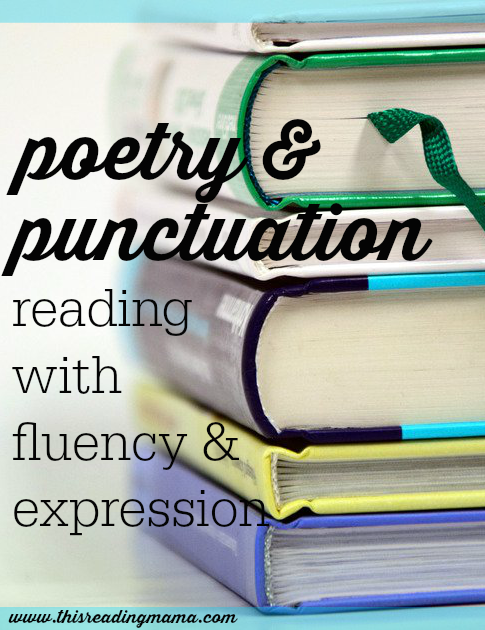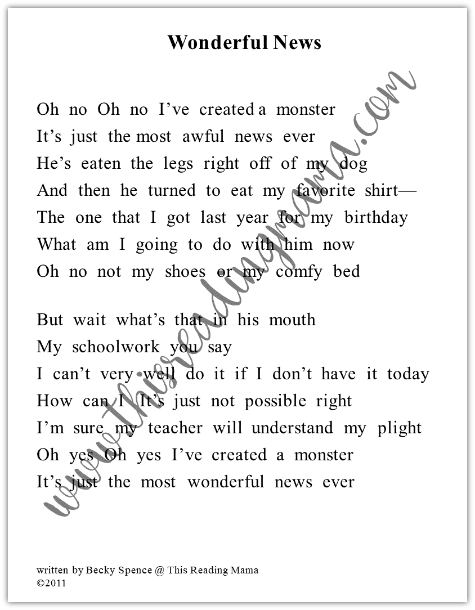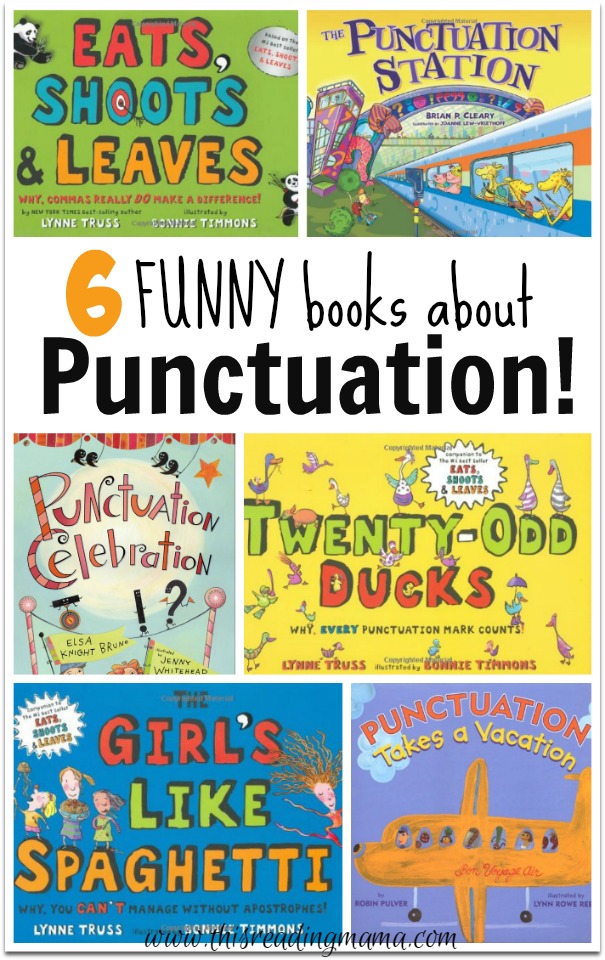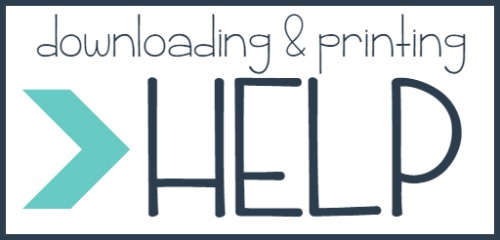Reading with fluency is SO important for readers. Using poetry is the perfect avenue for reading with fluency and expression. Why poetry? It’s typically short and sweet and if you pick just the right poem, you can find a plethora of punctuation!

*This post contains affiliate links.
**The free poem download link can be found at the END of this post.
Ideas for Reading with Fluency and Expression
1. Model.
Model reading a couple of pieces of poetry that have a lot of punctuation. Point out how you used the punctuation to make your voice sound a certain way or paused for a little drama. (Invention & Boa Constrictor by Shel Silverstein from Where the Sidewalk Ends have some great potential.)
2. Child Reads the Poem.
She picks one of the poems you modeled and she reads it*, attempting to use the punctuation to affect her expression as well. Review her attempts (good and “bad”) and if needed, read chorally a few of the phrases to make sure she understands.
*Remember that if you ask a child to read something, it needs to be on her level (there may be some words she doesn’t know, but there shouldn’t be a lot). This gets tricky when you’ve found the “perfect” text to use, but it’s too hard (or even too easy). Here’s how I get around this: I re-typed the text and change a few of the words so it’s on the child’s level. Think about using easier or harder synonyms. You don’t have to be a poet to do this–I promise!!
3. Poetry with NO Punctuation.
Re-type a poem the child has never read before, making sure you leave out the punctuation. Let her look it over and ask if she notices anything peculiar about it. Have her read through it silently to get a feel for what the author is trying to say.

I’ve written a poem just for your readers! It has no punctuation, but plenty of places to add some. (It’s roughly on an end of 1st grade reading level.) Grab it at the end of this post!
4. Re-read, adding some punctuation.
Now the child can re-read the poem aloud, adding her own punctuation where she deems it appropriate. Where would it make the most sense?
While there can be inappropriate places to put punctuation, do not ask the child to punctuate the poem exactly like the original text. Having “the” predetermined answer is counterproductive and does not allow her to be a critical and creative reader.
5. Read the “new” poem with expression.
Now, can she”sell” it to you…make you believe in her choices? Can she use the new punctuation to drive the meaning of the text? Does she need to change or add more punctuation to make it sound better? What and where?
Extensions
- read more poetry with lots of punctuation
- find another poem to re-type on the child’s independent level and assign it for homework or independent work
- get two students to compare their punctuation after they’ve worked independently
- give the child the original poem (with punctuation) after she’s done her own work. The child can read each version {with fluency}, then tell which version she liked better, critiquing the author.
- let students write their own poetry, making sure they include punctuation to get their meaning across to the reader
Punctuation Books You Don’t Want to Miss!
Teaching about punctuation? Here are some books you want to have because you’ll read them over and over!

1. Eats, Shoots and Leaves by Lynne Truss
2. The Punctuation Station by Brian P. Cleary
3. Punctuation Celebration by Elsa Knight Bruno
4. Twenty-Odd Ducks by Lynne Truss
5. The Girl’s Like Spaghetti by Lynne Truss
6. Punctuation Takes a Vacation by Robin Pulver
Enjoy teaching!
~Becky


I like this! It is so powerful to have a child think, reason, and evaluate. If done right, this activity will allow a child to explore punctuation in a meaningful way. It’s good not to always jump in with the answers.
I totally agree. Sometimes having “the answers” will turn a child off; especially one that struggles. Thanks for commenting. I always enjoy hearing what you have to say.
I also love to read a passage with either the wrong punctuation, or with weird, phonetic punctuation the way Victor Borge would do it. http://www.youtube.com/watch?v=lF4qii8S3gw Kids love this and again, it helps them focus on the punctuating in a fun way.
YES YES YES. I thought about him yesterday! This makes it totally fun!
My Mum was a teacher, and she used to explain punctuation (commas and full stops) to me like this – if you needed to take a little pause in the sentence, put a comma in. A full stop goes where you take a breath before starting to read again.
Still makes sense, whenever I write something…
That’s a great way to put it. Isn’t it funny how we still use some of the same strategies that we learned as kids!!